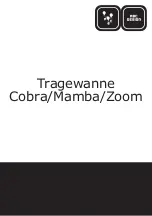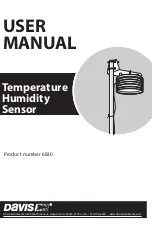
Communication
FP
Σ
User's Manual
174
8.5.2 Command
and
Response Format
Command message
All command-related items should be noted in the text segment. The station number must be
specified before sending the command.
0
1
#
R
C
S
R
0
0
0
1
C
R
%
1
Start code
Commands must always have a "%" (ASCII code: 16#25) or a "<" (ASCII code: 16#3C) at the beginning of a
message.
The FP
Σ
supports an expansion start code ("<") to send single frames of up to 2048 characters. Using the
start code "%", a maximum of 118 characters can be sent in one frame.
2
Station number
The station number of the slave to which you want to send the command must be specified.
The range is 01 to 99 (decimal).
In 1:1 communication, the station number "01" (ASCII code: 16#3031) should be specified.
3
Text
The content differs depending on the command. The content should be noted in all upper-case characters,
following the fixed formula for the particular command.
The method for writing text segments in the message varies depending on the type of command.
4
Check code
Hexadecimal block check code (BCC) for error detection using horizontal parity. The BCC should be created
so that it targets all of the text data from the header to the last text character.
The BCC starts from the header and checks each character in sequence, using the exclusive OR operation,
and replaces the final result with character text. It is normally part of the calculation program and is created
automatically.
The parity check can be skipped by entering "* *" (ASCII code: 16#2A2A) instead of the BCC.
5
End code
Messages must always end with a "
C
R
" (ASCII code: 16#0D).
6
Target address
Address of the target area to be read or written (e.g. internal relay R1)
7
Data area
Specification of the number of points to be read or written (S = 1 point)
8
Command name
e.g. RC, read contact area
9
Command code
# (16#23) indicates that this is a command
Summary of Contents for FPS Series
Page 7: ......
Page 17: ......
Page 18: ...Chapter 1 Safety Measures...
Page 21: ......
Page 22: ...Chapter 2 Overview...
Page 32: ...Chapter 3 CPU Types...
Page 47: ...CPU Types FP User s Manual 30 LD Body...
Page 51: ...CPU Types FP User s Manual 34 POU Header and LD Body...
Page 55: ...CPU Types FP User s Manual 38 LD Body...
Page 57: ......
Page 58: ...Chapter 4 Expansion...
Page 73: ......
Page 74: ...Chapter 5 I O Allocation...
Page 81: ......
Page 82: ...Chapter 6 Installation and Wiring...
Page 115: ......
Page 116: ...Chapter 7 High Speed Counter and Pulse Output...
Page 169: ......
Page 170: ...Chapter 8 Communication...
Page 227: ...Communication FP User s Manual 210 LD Body ST Body...
Page 233: ...Communication FP User s Manual 216 POU Header LD Body...
Page 236: ...FP User s Manual 8 6 Program Controlled Communication 219 POU Header LD Body 1 2...
Page 237: ...Communication FP User s Manual 220 2 2 ST Body...
Page 266: ...Chapter 9 Security Functions...
Page 273: ......
Page 274: ...Chapter 10 Other Functions...
Page 277: ......
Page 278: ...Chapter 11 Troubleshooting...
Page 289: ......
Page 290: ...Chapter 12 Appendix...
















































